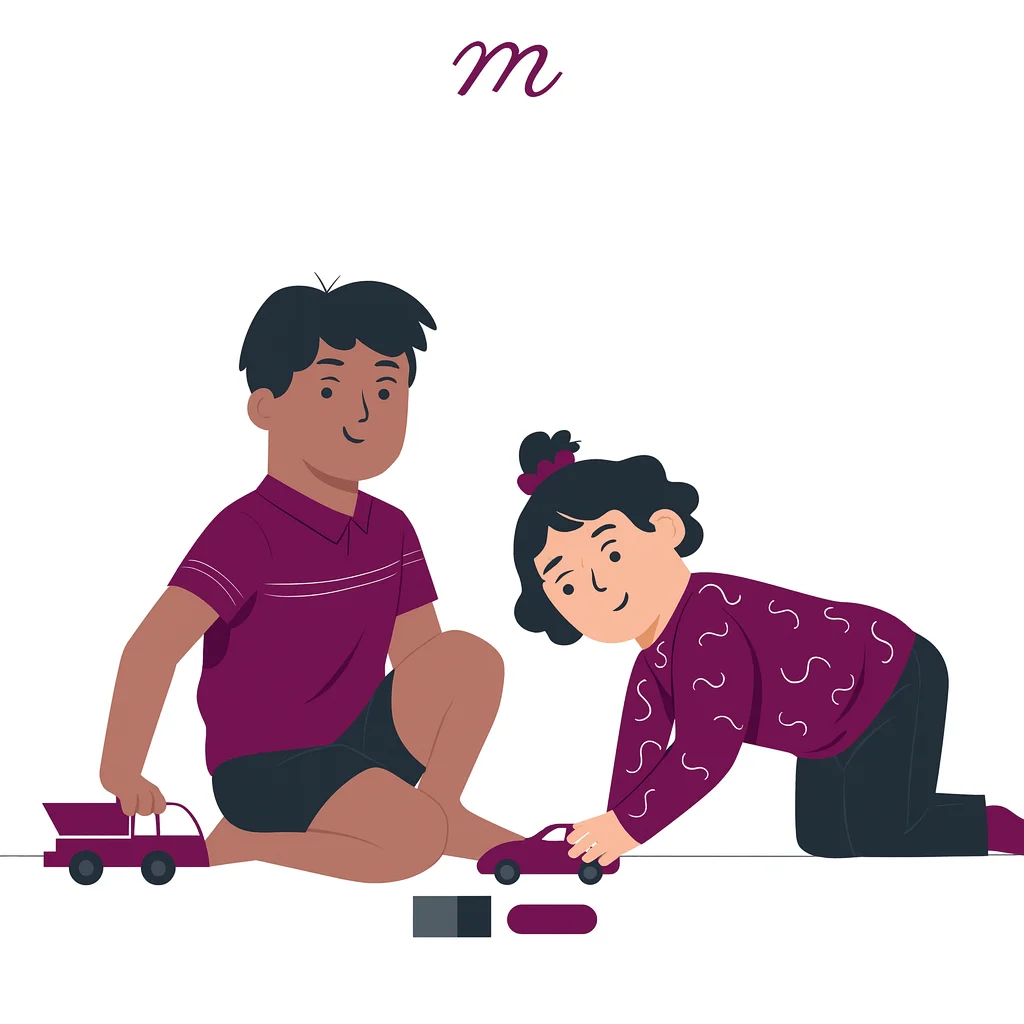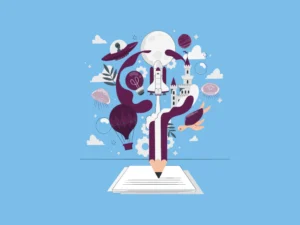Play therapy offers powerful ways to address children’s anxiety. It allows them to express themselves, process their emotions, and build resilience in a safe, engaging environment. Below are effective play therapy interventions specifically designed to treat childhood anxiety.
Play Therapy Interventions For Childhood anxiety.
The Safe Place Visualization
This empowers children to create a mental refuge, or “safe place,” where they feel secure and can mentally retreat during anxious or stressful moments. This activity is designed to guide children in visualizing a comforting and peaceful mental space they can access whenever they feel overwhelmed (Chorpita & Daleiden, 2009). This place can be an actual location they associate with calmness and security, such as their bedroom, a cozy corner, or a favorite park. Or it can be an imagined world with comforting elements, like magical creatures, calming aromas, soft textures, or soothing colors that bring them joy and relaxation.
Through guided visualization exercises, children engage all their senses—imagining the sights, sounds, smells, and textures of the safe space. This practice creates a vivid mental retreat and helps shift their focus away from anxiety triggers, allowing them to regulate their emotions and feel grounded (Chorpita & Daleiden, 2009).
The safe place visualization is effective when practiced consistently over multiple sessions. As children become familiar with their internal refuge, they learn to access it independently, using the calming response as a self-soothing tool in real-life situations. Over time, this activity helps them build resilience, feel more in control of their emotional reactions, and develop a lasting sense of inner peace and security.
Begin by inviting the child to sit comfortably, close their eyes, and take a few slow, deep breaths. In a calm and reassuring voice, say, “Let’s imagine a place where you feel completely safe and peaceful. This is your special place, just for you. In this place, you feel relaxed and happy. Nothing can hurt or bother you here.”
As the child begins to relax, encourage them to describe what makes them feel safe. “What does your safe place look like?” you might ask gently. “Is it indoors or outside? Are there any colors, lights, or textures around you? Are there people or animals there with you? Take a look around—what do you see?”
After they describe their safe place, guide them to go a bit deeper. “Do you hear anything in this place? You may hear soft music, birds singing, waves meeting a sandy beach, or just a peaceful silence. Take a moment to listen to the sounds that make you feel calm.” Pause, allowing them to fully imagine these sounds in their mind.
Next, help them engage other senses: “Are there any smells here that make you feel comfortable and happy? It could be fresh flowers, warm cookies, or a favorite candle scent. Imagine those aromas now.”
Once they have a clear image of their safe place, ask them to open their eyes and use art supplies to represent it visually. Encourage them to draw or paint the elements they describe. As they add each detail, gently reinforce the connection to safety and peace: “This part of your picture shows how calm you feel here,” or “These colors remind you of how safe you are in this place.”
When the child is finished, gently encourage them to remember their safe place, reminding them they can “visit” whenever they feel anxious or scared. Guide them to remember each detail they described—textures, sounds, smells, colors—so they can feel safe and calm at any time.
The Worry Monster
This helps children externalize anxiety and create a tangible way to “let go” of worries. This friendly, comforting character “gobbles up” worries, making them feel lighter and less burdened. This fun, imaginative activity is designed to help children externalize anxieties and see them as manageable, not something they have to cope with alone (Chorpita & Daleiden, 2009).
To create the Worry Monster, choose a special object with the child—a stuffed animal, a simple hand-drawn character, or a decorated box. This object becomes the “Worry Monster,” whose job is to listen to and “eat” the child’s worries. Together, you might even give the Worry Monster a backstory. For example, “This is Max the Worry Monster. Max helps kids feel better by munching on their worries and turning them into positive energy!”
When the child feels anxious or troubled, encourage them to talk to the Worry Monster or write down their worries on small pieces of paper. With each concern, they can fold the paper and “feed” it to the Worry Monster by placing it in the box, inside the stuffed animal’s “mouth,” or beside the drawing. With younger children, make the process playful by creating sounds or pretending the monster enjoys “eating” their worries. For example, “Oh, your Worry Monster thinks your fear of the dark is the tastiest snack!”
As they do this, remind them that once a worry has been “eaten,” it’s out of their hands, and the Worry Monster is now in charge.
To deepen the impact of the activity, you might ask questions:
- “What does it feel like to give that worry to the Worry Monster?”
- “Do you feel a bit lighter now that the Worry Monster is taking care of it?”
- “If your worry had a color or shape, what would it look like? How does it change after the Worry Monster ‘eats’ it?”
- “What do you imagine the Worry Monster does with your worry once it’s gobbled up?”
- “How does it feel knowing you have a friend like the Worry Monster to help you with your worries whenever you need it?”
The Worry Monster becomes a safe and trusted friend they can turn to whenever worries arise, increasing a sense of control. With each session, the child learns to “give away” their worries and fears, empowering them to release overwhelming thoughts rather than keeping them bottled up inside.
Consider incorporating a ritual with the Worry Monster to reinforce this sense of control. Once a week, take out the worries (if they’re written down) and “send them away” by tearing them up, crumpling them, or “releasing” them in another way. This exercise emphasizes that worries aren’t permanent—they’re temporary, and they can let them go.
The child learns that worries are just thoughts they can acknowledge, address, and release. Over time, this simple intervention builds resilience and encourages a healthy coping mechanism, empowering the child to face future challenges more confidently and calmly.
Role-Playing Scenarios with Puppets
This helps children rehearse anxiety-provoking scenarios in a safe, supportive way. Therapists can use puppets or stuffed animals to create a dynamic, interactive environment where children explore and practice responses to anxiety-provoking situations in fun and non-threatening play (Chorpita & Daleiden, 2009). Children “try on” different responses and gain confidence as they navigate scenarios they might find challenging, such as talking to a new friend, going to school, or visiting the doctor.
- Choose puppets or toys the child feels comfortable with, perhaps asking them to pick their “favorite friend” for the role-play session. Characters that resemble everyday people in the child’s life (e.g., a “classmate” puppet or a “doctor” stuffed animal) can make the scenarios feel more realistic and relevant.
- Start by narrating a simple scenario that includes the puppet facing a common anxiety, such as being nervous about talking to a new friend. Introduce the scenario with lighthearted, encouraging language, like “Our friend feels a little shy and isn’t sure what to say. Have you ever felt that way?”
- Encourage the child to use the puppet to act out their feelings and responses. Allow them to play both the “worried” character and the “supportive” friend or adult. Letting the child lead allows them to express their perspective and increase creativity and insight.
- Guide the child to practice specific coping strategies through the puppet, such as deep breathing, using calming phrases (“I can do this” or “I’ll just say hello and see what happens”), or imagining a positive outcome. This approach can help make abstract coping skills tangible and practical.
- As the child plays out their responses, validate their feelings and encourage them. For example, “You did a great job comforting your friend! That was really kind,” or “Look how brave the puppet was to say hello! How do you think that felt?”
Example: Set up a scene where one puppet feels too shy to ask to play with others on the playground. Let the child play both roles, guiding them to explore what might happen if they say, “Hi, can I play too?” or practice reassuring phrases like, “It’s okay if they say no; I can try again another time.” Encourage the child to imagine positive responses: “What if the other puppet says, ‘Sure! We’d love for you to join us!’ How would that feel?” Suggest that the child use comforting words for the shy puppet, reinforcing the concept that it’s okay to feel anxious but also to take a brave step.
After the role-play, process the activity with the child.
- Discuss what went well: “You did a nice job helping the puppet feel less shy. What was your favorite part?”
- Encourage self-reflection: “What did the puppet do that made it easier to feel comfortable? How did that make them feel?”
- Talk about real-life applications: “Next time you feel nervous, do you think you could try saying the same words to yourself? What might happen?”
This activity provides children with a sense of agency and control. Practicing through puppets builds confidence and allows children to develop a repertoire of strategies they can use independently. Role-playing reinforces the idea that anxiety is normal and manageable, promoting resilience and reducing the stigma children may feel about their worries.
The Bubble Breathing Technique
This teaches deep breathing as a calming technique in a playful, sensory-based manner. Children learn the fundamentals of deep breathing in a way that feels engaging and accessible. Using bubbles as a visual aid, children see the immediate effect of their breathing—how a gentle, steady breath creates large, slow-forming bubbles, while a rushed or shallow breath causes tiny bubbles or pops them quickly. This hands-on approach helps children learn to control their breath and understand how deep breathing soothes their emotions. Deep breathing is scientifically shown to calm the nervous system, reduce stress, and help children regulate their emotions, making it a valuable skill for managing anxiety and calming down (Porges, 2011).
Children who don’t have a physical bubble solution available can imagine blowing an imaginary bubble or using a pretend wand, focusing on taking a long, slow breath out as if they’re creating a giant bubble. This activity is easy to integrate into moments when children feel anxious, overwhelmed, or need a calming break, and it’s a fun way to reinforce healthy breathing habits.
Example:
- Invite the child to sit comfortably and hold a bottle of bubble solution and a bubble wand. If bubbles aren’t available, they can pretend to have an imaginary wand.
- Begin by modeling a deep breath, breathing in slowly through the nose and out through the mouth. Explain to the child, “We’ll practice breathing to make a really big bubble. The slower and steadier you breathe out, the bigger and smoother the bubble will be.”
- Ask the child to take a deep breath in through their nose, hold it for three seconds, and then slowly breathe out through their mouth as they blow a bubble. Encourage them to go as slowly as they can to make the bubble as large as possible without popping. This slows their breathing rate and engages their focus.
- After blowing a few bubbles, ask the child to pay attention to how they feel. You might ask, “How does your body feel after blowing these bubbles? Do you feel calmer or more relaxed?”
- Explain that this relaxed feeling results from breathing slowly and deeply. Reinforce that they can use bubble breathing anytime they feel worried, scared, or overwhelmed.
- For an alternative, guide the child to imagine holding a bubble wand and blowing a gentle bubble. Encourage them to visualize the bubble forming as they exhale slowly. This allows them to practice the technique even when bubbles aren’t physically present.
Tips:
- Especially for younger children, model the breathing technique first, showing exaggerated slow breaths to clarify it. Visual modeling helps children mimic the technique more effectively.
- Encourage the child to imagine different shapes, colors, or sizes for their bubbles, turning it into a creative exercise. For example, “What color would you like your bubble to be? Let’s imagine blowing a big, pink bubble together!”
- After each deep breath, give positive reinforcement, such as “Great job! That was a nice, slow breath” or “Look how calm you are now!” This encourages children to feel successful and reinforces the exercise’s calming effect.
- Introduce bubble breathing as a calming tool they can use before bed, during transitions, or anytime they feel anxious. By making it a regular practice, children become more comfortable with it and are more likely to use it independently.
- Talk about the physical sensations associated with relaxation, like how their body might feel lighter or their shoulders might drop. This enhances their body awareness and reinforces the link between deep breathing and a calm body.
The Magic Box
This helps children develop coping skills and a sense of security. This personalized container is filled with small, meaningful items that help comfort or distract the child during anxious moments. Creating and filling the box with items that soothe, entertain, or bring positive memories gives children a tangible resource they can turn to whenever they feel overwhelmed (Chorpita & Daleiden, 2009). This simple yet effective coping tool empowers and gives children immediate access to items that evoke calm, happiness, or reassurance. The Magic Box is a source of comfort and a structured way for children to reconnect with positive feelings and cherished memories during difficult times, helping them build resilience and emotional awareness. Here are the steps to create a Magic Box:
- Begin by helping the child decorate their box, using materials like stickers, markers, paint, or glitter to make it uniquely theirs. Encourage them to express their personality and interests through the decoration, turning it into a creative, engaging activity. Personalization adds a layer of ownership and makes the box feel special.
- Guide the child to select small items that make them feel happy, calm, or safe. These might include a favorite toy, a comforting photo, a worry stone, a piece of soft fabric, a stress ball, or even a tiny bottle of essential oil with a soothing scent (like lavender). Encourage them to think of things that evoke warm memories or provide sensory comfort, such as a shell from a beach trip or a smooth rock from a nature walk.
- As the child chooses objects, discuss why each is meaningful or comforting. For example, “This rock reminds you of the day you went to the beach with your family, right? How did that make you feel?” or “This picture is of your favorite stuffed animal—what do you like about it?” Talking about these associations helps reinforce the positive emotions tied to each object.
- Once the box is complete, encourage the child to practice using it when they feel calm so it becomes a familiar routine they can rely on when anxious. For instance, you might practice taking a “calm down break” together, where the child opens the box, explores each item, and reflects on the positive feelings connected to them. By rehearsing in non-stressful situations, the child will feel more confident using the box independently when upset.
- In situations where they may not be able to carry the box (such as school), encourage them to “imagine” it. Prompt them to think about the items inside and recall the feelings each one evokes. For example, “If you start to feel nervous, remember what your worry stone feels like in your hand and picture yourself holding it.” This practice allows them to mentally access the calming power of their Magic Box wherever they go.
Tips:
- To engage different senses, consider adding items like scented sachets, small pieces of textured fabric, or mini coloring sheets with crayons. Sensory engagement can ground and help redirect focus from anxiety to the present moment.
- Encourage the child to write or include positive notes, quotes, or affirmations in the box, such as “I am brave,” “I can handle this,” or “This feeling will pass.” Reading these messages can provide a quick boost of confidence during anxious moments.
- Introduce regular “Magic Box time” as a part of the child’s routine, perhaps before bed or after school. This normalizes using the box as a tool, making it easier for the child to reach for it when they need comfort.
- As the child grows, their needs and favorite items may change. Periodically go through the box together, refreshing the items to ensure they remain relevant and meaningful.
The Magic Box is a simple yet powerful tool that helps children learn self-soothing techniques and manage anxiety by connecting with comforting objects and positive memories. This practice reinforces the child’s sense of agency over their emotional well-being, providing a gentle, accessible way to self-regulate during stressful moments.
Sand Tray Therapy
This provides a sensory outlet for self-expression and exploration of anxieties. This creative therapeutic approach allows children to use a tray of sand and various miniature figures to construct a small “world” that mirrors their thoughts, feelings, and inner experiences (Homeyer & Sweeney, 2016). The tactile experience of touching and moving the sand can have a naturally grounding effect, promoting a sense of calm and focus. In addition, the miniatures—representing people, animals, buildings, plants, and other symbolic objects—provide children with a non-verbal way to express complex emotions, fears, and strengths in a safe, contained environment. By arranging and interacting with these figures, children gain a concrete, visual means to explore and work through complicated or intense feelings, making sand tray therapy an empowering method for self-exploration and emotional processing.
Sand tray therapy is highly beneficial for anxious children because it gives them a concrete way to process abstract feelings, express themselves non-verbally, and feel in control of their emotions (Homeyer & Sweeney, 2016). This gentle, supportive approach provides a safe environment for children to explore their inner world, ultimately helping them develop insight, resilience, and emotional regulation skills.
Example:
- Begin by introducing the child to the sand tray and explaining that it’s a place where they can create anything they want. Show them the miniatures they can choose from and invite them to select figures that resonate with them.
- Allow the child to freely explore the sand by running their hands through it, moving it around, or using tools to shape it. This initial sensory engagement can be soothing and help the child feel more comfortable.
- Encourage the child to start building their scene. They may create a landscape, a “home,” a battle, or even a fantastical world. They can use the sand to form hills, valleys, or paths and place miniatures as inhabitants of this world. As they build, they may include figures representing themselves, supportive characters (like animals or heroes), challenges (such as barriers or “monsters”), and comforting elements (like trees, safe buildings, or friends).
- As the scene develops, ask gentle, open-ended questions to help the child express and explore their feelings:
- Who lives in this world?
- Can you tell me about this character? What are they like?
- What is this character worried about? Is there anything they’re afraid of?
- Who or what helps this character feel safe?
- What does this part of the world represent to you?
- Notice any recurring symbols or themes in the child’s sand tray world. For instance, repeated use of protective structures may indicate a need for safety, while figures facing each other might represent internal conflict. These patterns can provide insights into the child’s inner world and emotional landscape.
- When the child is finished creating their world, invite them to reflect on the scene. You might ask, “What would happen if this character had a way to face their fear?” or “Is there anything else this world needs to make it feel safer?” Reflective questions help children identify potential coping strategies or imagine positive outcomes, reinforcing problem-solving skills and resilience.
- One therapeutic technique involves encouraging the child to change the scene if they feel inclined. For example, if they’ve represented a fear as a giant “monster” figure, they might add a “helper” character to provide support or shrink the monster to make it less intimidating. Modifying the world gives them a sense of control, helping them practice reframing or managing difficult emotions.
Tips:
- Provide a variety of miniatures, including characters, animals, natural elements, buildings, and abstract objects, to give children a broad selection of symbolic tools for expression.
- Allow the child to guide the process and refrain from imposing interpretations. Instead, observe and ask open-ended questions to support the child’s natural storytelling and meaning-making.
- If the child hesitates to address specific themes (such as fears or vulnerabilities), respect their boundaries and allow them to move at their own pace. The contained environment of the sand tray itself offers comfort and structure, making it easier for children to explore challenging emotions gradually.
- Sand tray therapy can be revisited over multiple sessions. Some children may create ongoing stories or add to previous scenes, allowing for a deepening of themes and further emotional exploration over time.
- At the end of each session, thank the child for sharing their world and acknowledge any emotions that may have surfaced. You might suggest they “leave” the characters safely in the sand tray, symbolizing that these worries or challenges can stay contained there until they’re ready to explore them further.
Emotion Identification Games
Help children identify and express feelings related to their anxiety. Using games and tools like feeling cards, a feelings chart, or custom-made props, children can practice identifying and naming their emotions. Emotional literacy—the ability to recognize and label one’s own emotions—is a foundational skill for managing anxiety and developing resilience. When children learn to identify and articulate how they feel, it reduces the “unknown” factor of emotions, making them less overwhelming and more manageable (Denham & Burton, 2003). This practice empowers children to communicate their needs, ask for support, and begin the process of emotional self-regulation. By making feelings familiar and concrete, therapists and caregivers help children build a sense of control over their emotions, which increases confidence in managing anxiety and challenging experiences.
Example:
- Make a “feelings dice” by decorating each side with a different emotion. For younger children, use simple emotions like “scared,” “happy,” “sad,” “brave,” “angry,” and “excited.” For older children, you might introduce more nuanced emotions like “frustrated,” “confident,” or “curious.” Depending on the child’s age and reading level, you can use words or even faces to represent each emotion.
- Begin by explaining that the dice game will help them explore different feelings. Roll the dice together, and when it lands on an emotion, ask the child if they’ve felt this way recently or if they remember a specific time they felt this emotion. Encourage them to share a brief story or situation connected to that feeling. For example, if the dice lands on “scared,” the child might recall a time they were afraid of a storm or going to the doctor.
- After the child shares, guide them in describing how their body felt with each emotion. You might say, “What did it feel like in your body when you were scared? Did you feel it in your stomach, your chest, or somewhere else?” They may describe physical sensations like butterflies in their stomach, tightness in their chest, or tingling in their hands. This exercise helps children connect physical sensations with emotional experiences, which is essential for self-awareness and emotional regulation.
- As you play, validate the child’s emotions by empathizing with their experiences. For instance, you might say, “It sounds like that was really hard,” or “I get nervous too sometimes; it’s okay to feel that way.” This validation shows the child that their feelings are normal and acceptable, reinforcing a healthy relationship with emotions.
- For emotions that may feel more overwhelming (like fear or anger), take the opportunity to discuss calming techniques. For example, if the child rolls “angry,” you could suggest strategies such as taking deep breaths or counting to ten. Encourage them to try these techniques if they encounter the feeling again.
- Gradually introduce more complex feelings as the child becomes comfortable with the basics. For example, you could expand the dice to include “confused,” “lonely,” or “proud.” This helps broaden their emotional vocabulary and gives them more words to describe their inner experiences.
Tips:
- Incorporate a feelings chart, which has facial expressions paired with words, to visually reinforce the emotions on the dice. This is especially helpful for younger children or visual learners.
- To engage children more fully, ask them to express each emotion through their body or voice. For example, they might jump up and shout “Yes!” for “happy” or hunch their shoulders and whisper “Oh no!” for “scared.” Expressing emotions physically can make it easier for children to process and release them.
- After playing, invite the child to draw a picture or write a sentence about one of the emotions they rolled. This helps them reflect on and reinforce the emotional exploration in a tangible way.
- Integrate the feelings dice game into regular routines, such as a weekly check-in or whenever the child struggles emotionally. Over time, this repetition will make identifying and expressing emotions feel more natural and routine.
Conclusion
Play therapy interventions provide a safe, structured environment where children can express and manage their anxiety in developmentally appropriate ways. Each technique helps children understand their anxiety, builds coping skills, and strengthens resilience. Integrating these interventions into clinical practice offers a valuable toolkit for addressing childhood anxiety and supporting young clients in managing their emotional landscape with confidence and creativity.
References
Chorpita, B. F., & Daleiden, E. L. (2009). The Road Map to Mental Health Services for Children and Adolescents. American Psychological Association.
Denham, S. A., & Burton, R. (2003). Social and Emotional Prevention and Intervention Programming for Preschoolers. Springer Press.
Homeyer, L. E., & Sweeney, D. S. (2016). Sand Tray Therapy: A Practical Manual. Routledge.
Porges, S. W. (2011). The Polyvagal Theory: Neurophysiological Foundations of Emotions, Attachment, Communication, and Self-Regulation. W.W. Norton & Company.
Why other mental health professionals love Mentalyc

“Do yourself a favor, make your life easier. Use the tools that are readily available … I found Mentalyc to be one of the best tools that I’ve ever used.”
Licensed Marriage and Family Therapist

“For those who have hesitations … It is a lifesaver. It will change your life and you have more time to be present with your patients.”
Licensed Clinical Social Worker

“It immediately changed my quality of life, personally and professionally. I went from 3–4 hours a week of notes to 1 hour at most … that alone is invaluable personally and professionally.”
Owner/Independently Licensed Marriage & Family Therapist (IMFT)

“If I were recommending this software to a colleague, I would tell them that it is the best thing that they could do for their practice.”
Licensed Professional Counselor







